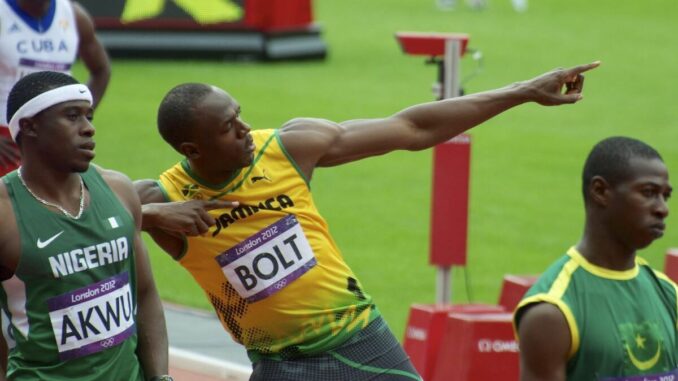
In a recent appearance on Justin Gatlin’s Ready. Set. Go. podcast, Usain Bolt was asked to name his “dream 100m lineup” — the seven sprinters he would most like to race. Among the names he chose, one stood out for Canadians: Ben Johnson.
Bolt’s list included several iconic figures: himself; Tyson Gay; Gatlin; Jamaican stars Asafa Powell and Yohan Blake; and U.S. sprint legend Maurice Greene. To complete the group, he added Canadian sprinter Ben Johnson.
On the surface, Johnson’s inclusion might surprise some, especially given the complexities of his legacy, but a glance into both his athletic record and his connection to Bolt helps explain the reasoning. Born in Scarborough, Ontario, Johnson rose to global prominence in the late 1980s—especially when he captured the 100m gold at the 1988 Seoul Olympics in a monumental 9.79 seconds, a time that was then a new world record. That victory was later annulled, after he tested positive for the steroid stanozolol, and thus lost the gold medal.
Yet, before and around that scandal, Johnson had compiled an almost unmatched dominance in sprinting. Between 1986 and 1988 he was nearly untouchable, breaking both the 9.9 and 9.8 second barriers in the 100m (and also delivering serious performances indoors over 60m). His rise — and subsequent fall — have made him among the most controversial figures in sprint history.
Bolt’s inclusion of Johnson in his dream lineup may owe something to a personal or symbolic connection: both sprinters hail from Jamaica’s Trelawny Parish (Johnson emigrated to Canada), and their childhood homes were only about 20 minutes apart. In that sense, Bolt might view Johnson not only as a rival but also as a kind of compatriot in the narrative of Jamaican sprinting excellence.
Still, Johnson’s legacy is complicated by his doping confession. After his positive test at Seoul, he initially denied using performance-enhancing drugs, but during Canada’s federal Dubin Inquiry in 1989, he admitted to steroid use and his coach, Charlie Francis, testified that Johnson had been using them since about 1981.
Given all that, some observers had expected another Canadian name might have appeared in Bolt’s lineup — namely, André De Grasse, the contemporary Canadian sprinter with whom Bolt has had both camaraderie and rivalry. But Bolt’s choice of Johnson suggests that he was reaching not just for current greats, but for historical legends whose careers are woven deeply into the mythos of sprinting.
Bolt’s “dream lineup” is not a purely hypothetical or nostalgic exercise — it’s a reflection of which names, past and present, he views as benchmarks, worthy opponents, or sources of inspiration. Johnson’s inclusion shows that even complicated legacies matter in the world of sprinting: the raw speed, the records, the controversy, and the narratives all play a role.
In the end, Bolt’s list is as much about storytelling as it is about racing potential. By placing Johnson among the greats, Bolt acknowledges the Canadian’s speed and impact — flawed though his career was — and cements his legacy (for better or worse) within the pantheon of sprinting Lore
Be the first to comment